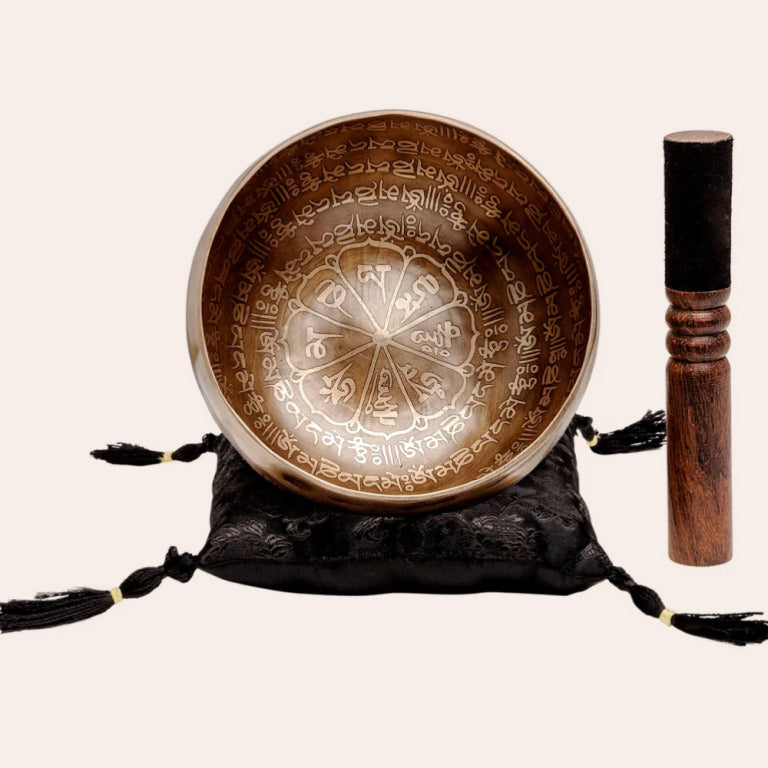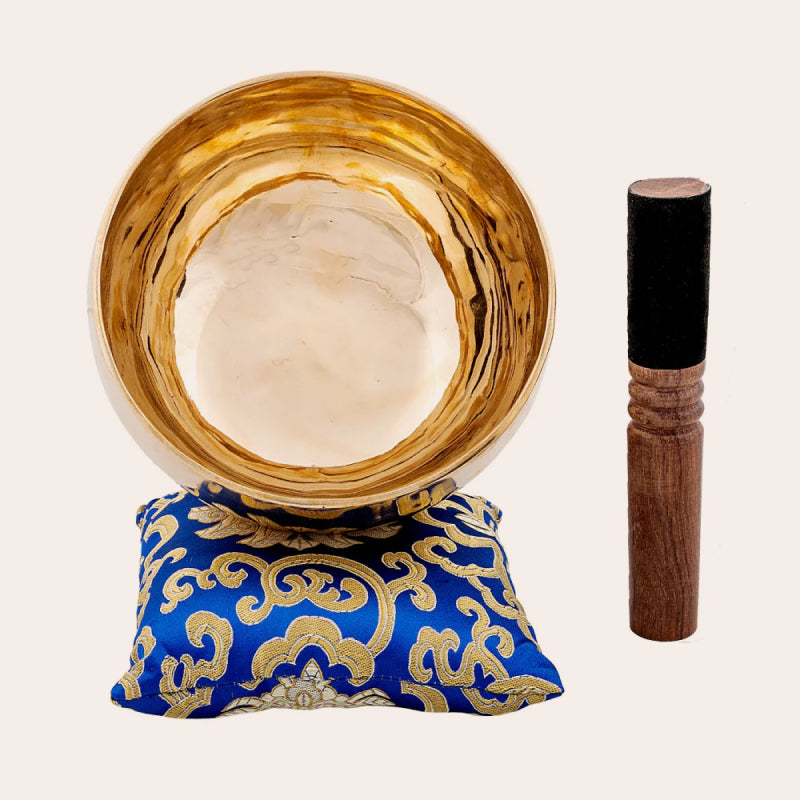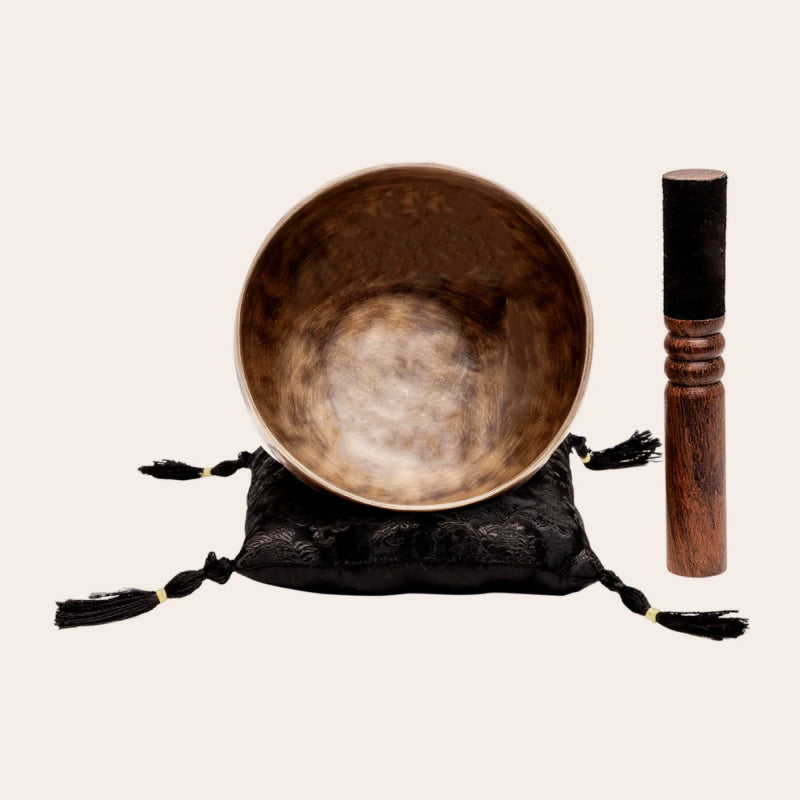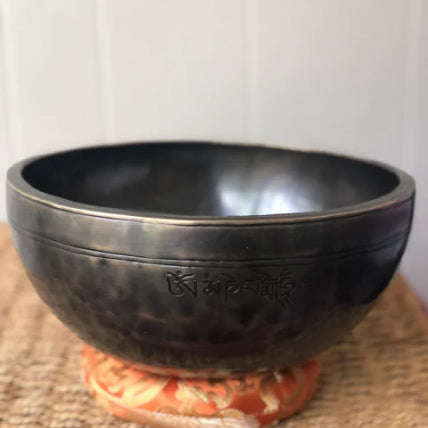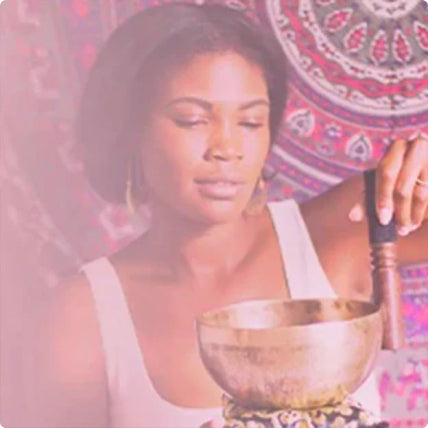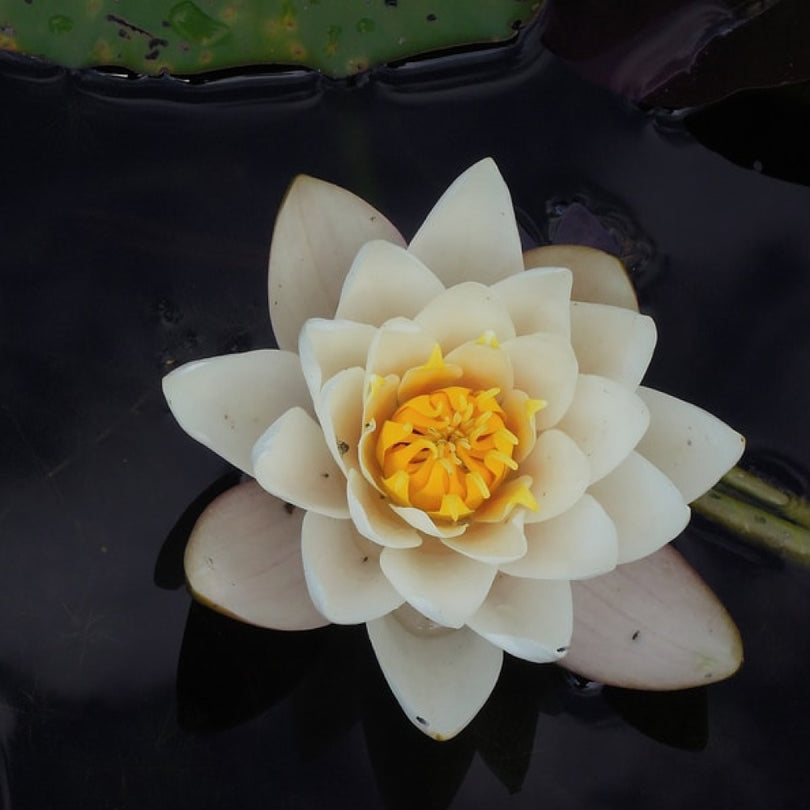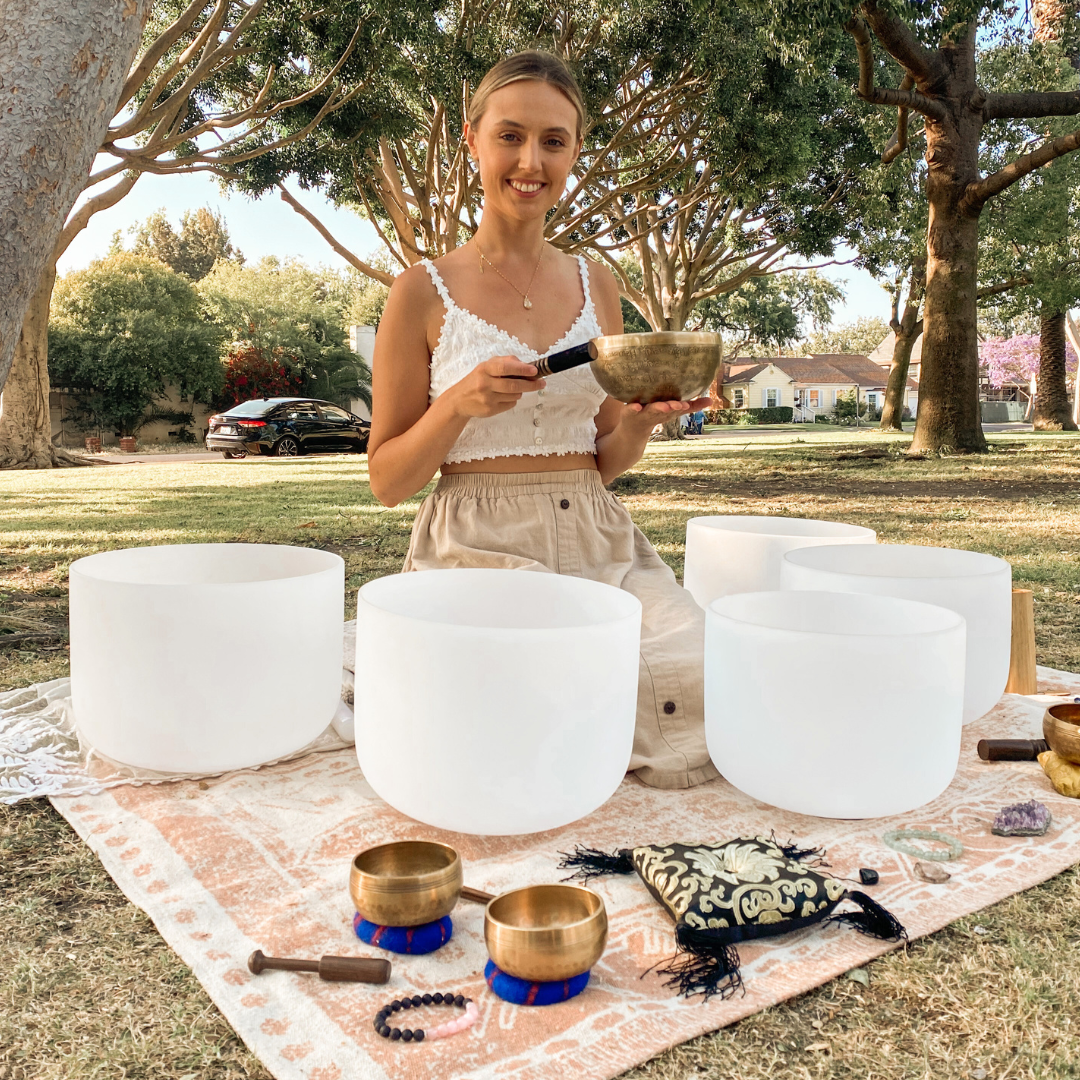The name ‘Tibetan Singing Bowls’ is so synonymous with singing bowls that many believe healing bowls must’ve originated from Tibet,
Right?
It’s actually wrong!
So, where did they come from? What’s the real history of singing bowls?
Singing bowls originated in the Himalayas of Nepal and India, before spreading to Tibet, China, Japan, Afghanistan, Vietnam, Egypt, and America. Today, you can find singing bowl makers in these places because they’ve become a vital part of its history since then.
Join us on a journey through the myths and facts surrounding the history of singing bowls from Nepal to America. I’ll explain how and why there are over ten places linked with the origin of the singing bowl.
Here we go!
The History Of Singing Bowls: Where Did Singing Bowls Originate From?
Do you know the term “singing bells” was introduced by Jit Bahadur Shahi? Up to this point in very recent history, singing bowls were only called “bowls.”
But whether you call them standing bells, healing bowls, cup gongs, prayer bowls, or meditation bowls, an inverted bell is a singing bell that generates a deep sonorous tone when played.
Let’s separate facts from myths and find out the real history of singing bowls
Tibetan History
I realized I had to dig deep into the history of these healing bowls when I read the article titled “Tibetan singing bowls are not Tibetan. Sincerely, a Tibetan person” in Toronto Star some time ago.
While there isn’t any historical evidence that singing bowls originated from Tibet, there are many anecdotal tales around the subject. We aren’t anthropological experts, rather sharing the tales that we have dug up from around the world.
One story says Tibetan monks and lamas used these bowls for an unknown sacred ritual and always kept it a guarded secret through generations.
Another recounts the Chinese invasion of Tibet forced the indigenous people of Tibet (lamas and monks) to flee with their valuables. Later, they sold these valuables, and that’s how Tibetan bowls spread around the world.
That’s perhaps why most believe the writing on these bowls, like in Tibetan scripts, aren’t actually mantras but family names. Another famous story is that these bowls date to a pre-Buddhist religion called Bon-Po that originated in Tibet.
Nepalese History
No matter which historian you ask, most quote Nepal and Northern India as the true origins of singing bowls. And it makes sense because Nepal is also the birthplace of Buddha. Perhaps that’s why we see gongs and cup singing bowls in Buddhist temples even today.
According to Aman Shahi, a sound healer from Thailand, “Many dealers at the time marketed the bowls as Tibetan, marking them as a more valued product. However, this wasn't true; they were made here in Nepal”.
That’s why this healing bowl has a name in Nepalese, unlike other origin stories. It’s called dabaka, bati, or bata in Nepalese, meaning “bowl.” Moreover, artifacts are found in the Himalayas over Nepal and India, with bowls going back up to 500 years.
If you look at the types of healing bowls from the bygone eras, you’ll find most of them have their roots in Nepal and India. Popular Nepalese singing bowl types are Thadobati, Jambati, Ultabati, Remuna, and Naga.
Indian History
With the predominant use of bells in Hindu sacred rituals and Indian chants saying OM, there are many reasons to assume the Himalayas of Northern India were the birthplace of standing bells. Moreover, Hinduism, which shares a lot with Buddhism, believes the universe was created from “sound,” too!
Despite all that, several indigenous singing bowls directly point to Indian origins. These include the Lingam bowl that stands for Hindu God Shiva, the Manipuri bowl that references an Indian state, and the Mani bowl called ‘mudra bowls’ (mudra is a Sanskrit word).
To pick Indian singing bowls specifically, look for the Sanskrit script on the bowl, such as ‘ॐ’ (pronounced OM).
Chinese History
Archaeologically, almost all the oldest healing bowls date back to 5th, 11th, and 16th century BCE China (at The Ohm Store, we only source our singing bowls from Nepal or India, never from China).
Standing bells from China don’t have leather wrapped mallets or multi-color cushions. The mallets are typically made of ordinary wood. One way to pick them out is with their cushions, often seen in red satin with Chinese scripts and symbols.
Mesopotamian History
A different story says the first sound bowls were made in Mesopotamia over 5,000 years ago. Along the same line, trade relations eventually moved the bowl along to Nepal, India, China, Tibet, Japan, and the rest of the east.
Japanese History
Moving farther East, Japan has its version of singing bowls called ‘Rin’. If you’ve heard an alternative name for singing bowls called ‘Rin gong,’ now you know why!
Moreover, every Japanese household owns a healing bowl or more for domestic use. This is based on a practice that came about between the 17th and 19th centuries.
Rin gongs come with a cushion perched on a wooden stand, and another frame horizontally holds the wooden mallet. The whole setup is typically called ‘Butsudan’ or a Buddhist Altar.
These meditation bowls are seen concurrently with Rei, Kei, and Orugoru or handbells and percussions. Moreover, they’re a significant part of the Japanese temple rituals.
Another unique thing about them is they’re made from premium-quality bronze. Ring gongs also boast the best musical scales among all the others.
Afghan History
Standing bells are also very popular in Afghanistan.
When we say the Himalayas, most people consider Nepal and India, but forget about Afghanistan. As Afghanistan was formerly a major trade hub, it might’ve had its version of the Himalayan bowl. If you dig deeper into history, the Afghan religion was predominantly Buddhism or Hinduism before Islam.
Above all that, Afghanistan had proven its tastes for architecture, metalwork, and beauty to prove it’s a part of the history of singing bowls.
Vietnamese
Often called the ‘golden metal,’ Vietnamese singing bowls are shiny from outside but with a duller texture inside. They’re also highly resonant and played with a mallet, sans any leather wrapping.
But that’s not the only reason why Vietnamese meditation bowls are part of history. They are widely used in Vietnamese temples for collecting donations. Moreover, there are singing bowls from older times unearthed in Vietnam too.
Other Areas
If you keep digging into the history of singing bowls, many places that lie close to the Himalayas will get entangled in the past. For instance, Myanmar to Korea, Bhutan, and Iran boast singing bowl artifacts from the bygone era.
But it’s impossible to share much about it until we have more information to support why and how these places are connected to the history of standing bells.
So, stay tuned!
American History
Most of America came into contact with the sounds of singing bowls through the music of Nancy Henning and Henry Wolff. They traveled to Nepal and Tibet in the ‘60s and later released albums saying ‘Tibetan Bells’ that popularized traditional Tibetan instruments.
Today, we have sound healing practitioners working with singing bowls worldwide, thanks to them! Perhaps that’s also where the confusion and conjecture of Tibet began.
Fortunately, that’s not all America had to offer the world in terms of singing bowls.
America must be thanked for creating the first-ever crystal singing bowls. Paul Utz created it in the ‘90s from quartz crystals. The technique married the healing properties of acoustics and crystal healing to create a new and beautiful healing sound.
Read more on the main differences between crystal and metal singing bowls next.
What were the historical uses of singing bowls?
Historians worldwide have concluded that most singing bowls were first used to measure grains, store them or as home use bowls. Some others claim it was used as a currency owing to the presence of precious metals in it, and others add to it by saying, “it must’ve been offered as a dowry or wedding gift.”
While some oppose that bowls with superb acoustics as Himalayan bowls were used singularly for acoustics, there aren’t any archaeological data that supports this notion.
Add Singing Bowls To Your Healing Rituals Today
We’ve learned that standing bells or singing bowls originated from the Himalayas around Nepal, India, and Tibet and spread to the rest of the adjacent countries 3,000 to 6,000 years ago.
All that said, singing bowls are often depicted in the hands of Buddha on several of his statues too.
Whether singing bowls came from Tibet, Nepal, India, China, or Japan - they are used in modernity for their utility in producing therapeutic brain waves.

